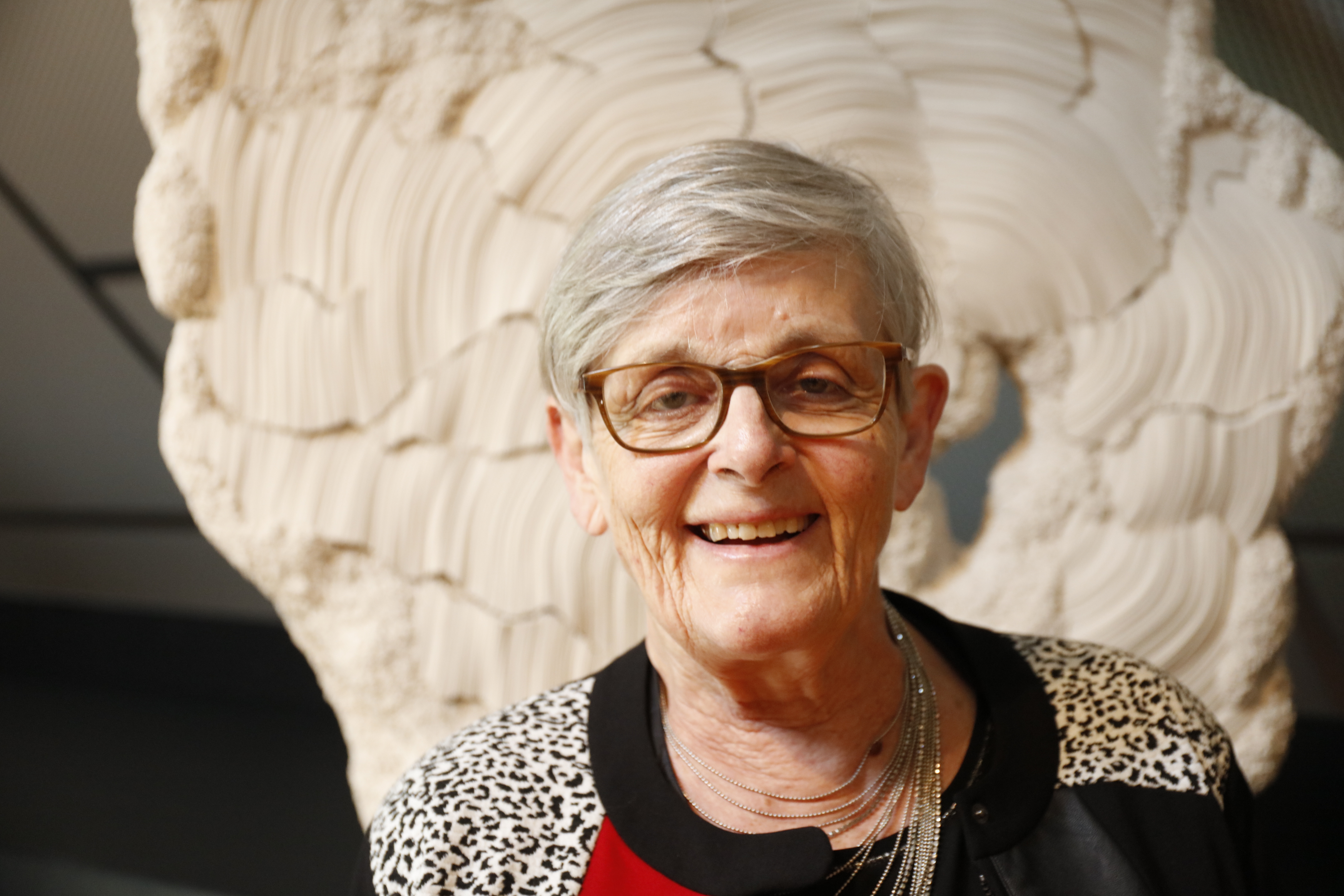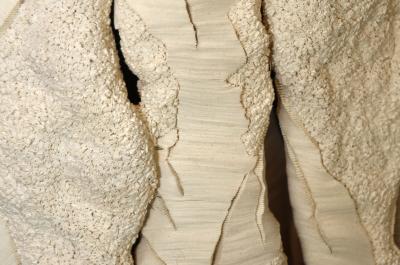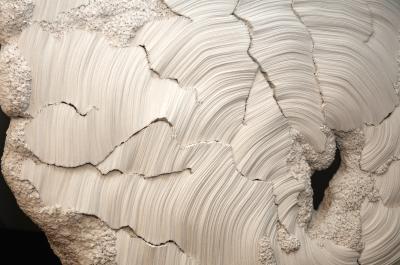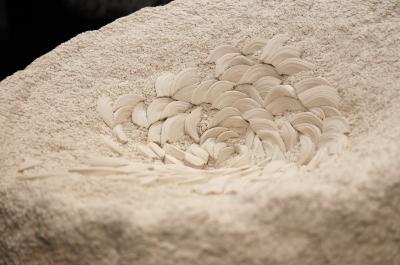Donkey Stables
H. Simone Pheulpin
"La nature du pli"
published at 12/02/2018
The material that Simone Pheulpin uses could not be more simple: strips of unbleached calico, a type of unprocessed cotton which she can still find in the Vosges.

“My creations are the result of an instinctive expression. The supple material and layering movement lead to forms that interact with shadow and light. They are the reflection of a harmony with the natural world”. Simone Pheulpin
The material that Simone Pheulpin uses could not be more simple: strips of unbleached calico, a type of unprocessed cotton which she can still find in the Vosges. She transforms this material beyond all recognition, both in its structure and nature, by shaping it in a regular and dense pile of very fine folds turned inside out by pins. The strangeness of the resulting artworks is unsettling: we thinit is a stone we can see before us. The folds resemble geology, at the same time as the forms, deliberately rounded, appear wholly organic – whether animal or plant we couldn’t say, when this animal stone that is a shell is not actually there.
No drawing “I know what I want”. Nothing but the strip between her fingers, the pin for fixing it or turning it inside out...
She also improvises, for the fabric guides her. As with all art, the idea comes before the action, but in her world the action influences the idea once again.
Simone Pheulpin is one-of-a-kind. She never attended art school, and yet the graphic style in her work is confident. She has never learned modelling or carving, and yet she builds her volumes with an absolute sense of the sculptural. She has invented a resolutely new way of deploying the textile, a technical know-how exhibited by no other artist in France or abroad. After twenty years, she still has plenty of resources to draw on – discovering more possibilities with each new year.
Simone Pheulpin also sees benefits in accidents: the flaw where the folds break and enter into conflict. Taking these by their ends, she draws out of them a “white horses” effect, a sort of “waviness” which she harnesses alone or together with the parallel folds. Other times, in what she calls the “barks”, she leaves glimpses of the pins fastening the fabric inside out, an underside which becomes that of a body, an interior, a slightly bristly intimacy.
BIOGRAPHICAL NOTES
Simone PHEULPIN
FRANCE

Simone Pheulpin au Domaine de Chaumont-sur-Loire, 2018 - © Éric Sander
Born in Nancy in 1941, she splits her time between Puteaux and the Vosges.


